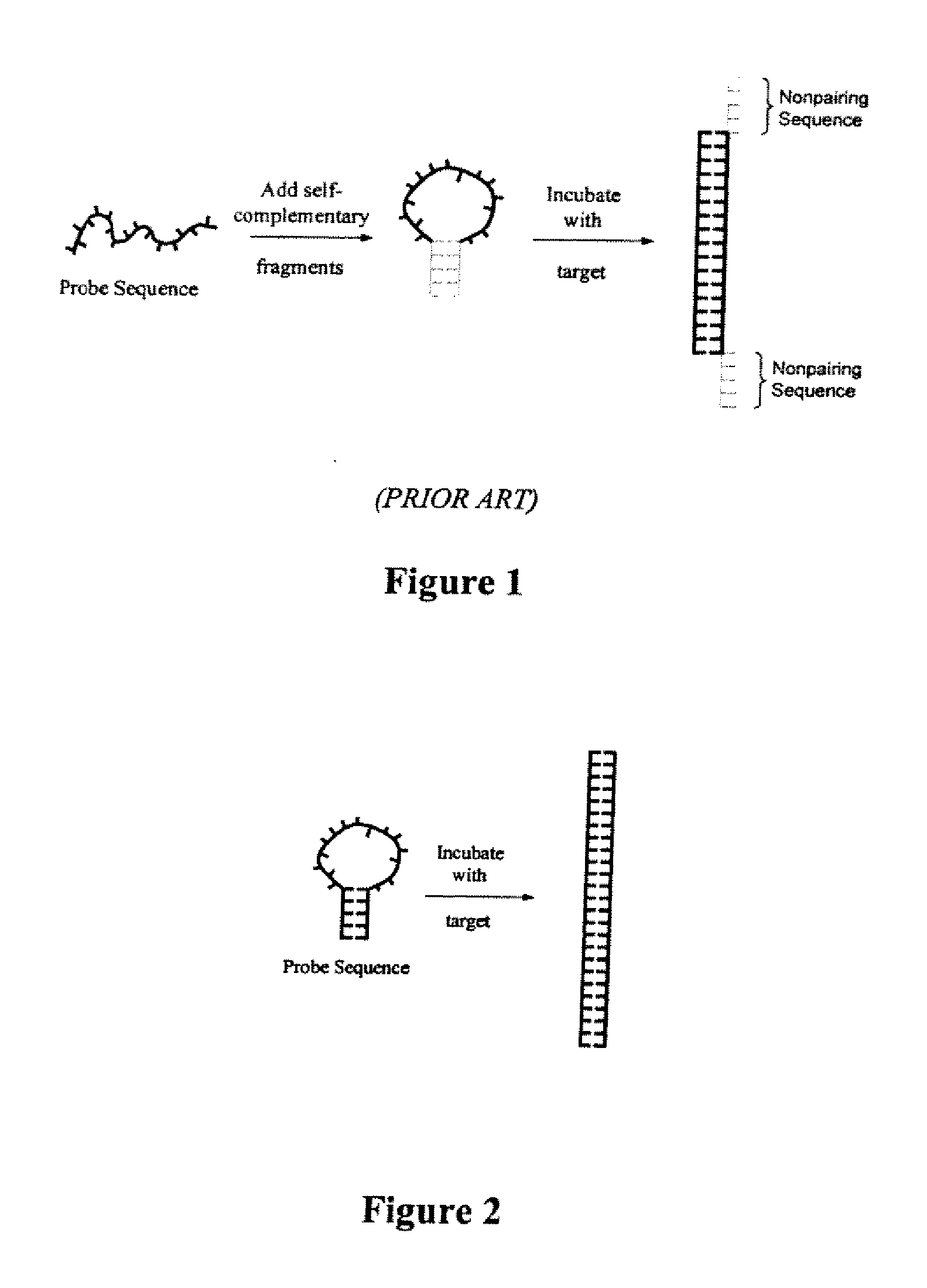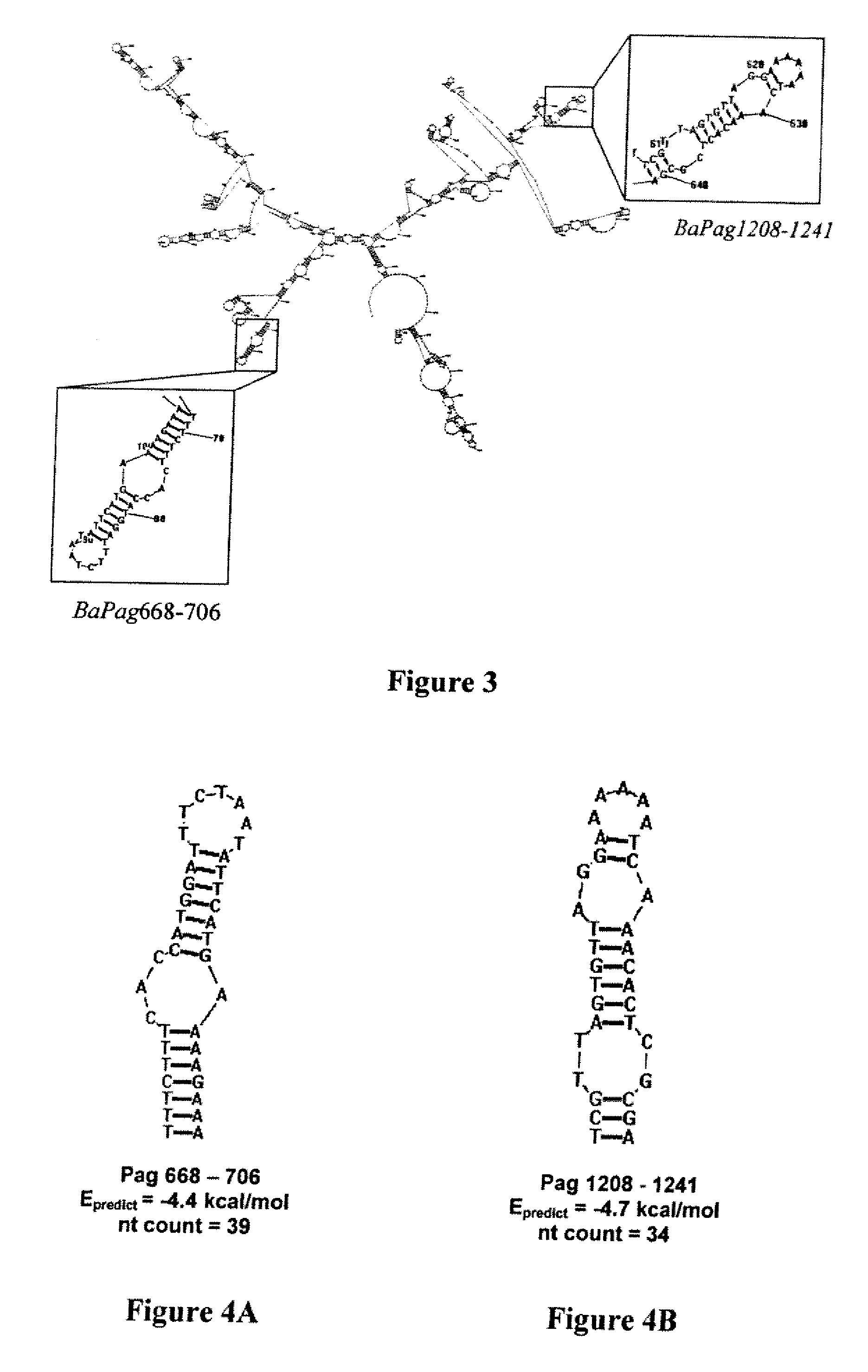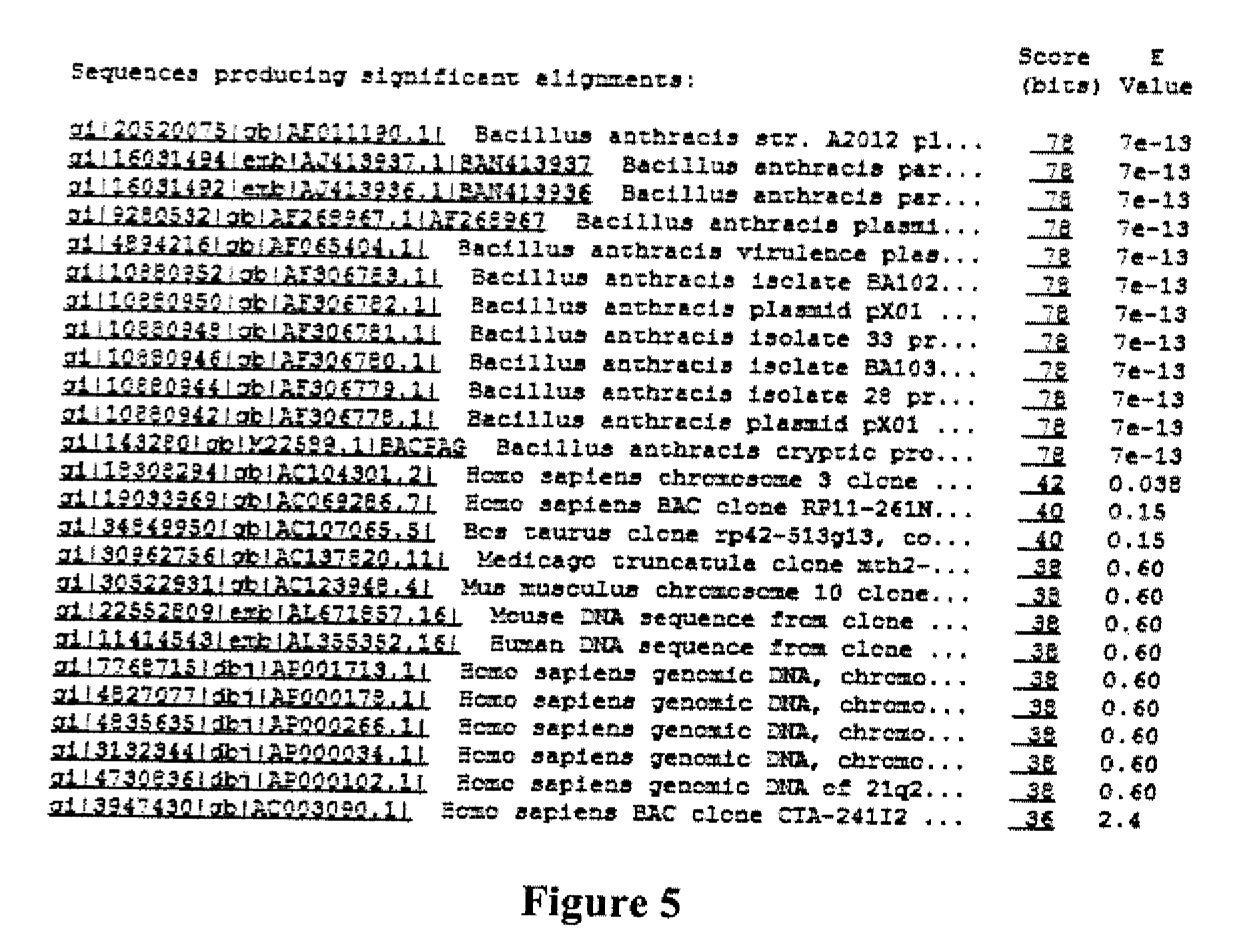Method of identifying hairpin DNA probes by partial fold analysis
- Summary
- Abstract
- Description
- Claims
- Application Information
AI Technical Summary
Benefits of technology
Problems solved by technology
Method used
Image
Examples
example 1
Hairpins Targeted to Bacillus anthracis pag Gene
[0058] A large sequence structure prediction from Bacillus anthracis is shown in FIG. 3 and depicts the “folding” of large sequences of DNA revealing several naturally occurring hairpins. The sequences are then isolated from the full sequence and subjected to second structure prediction. FIGS. 4A-B show structural predictions for two of these excised sequences.
[0059] These natural hairpins, BaPag668-706 (Pag 668) and BaPag1208-1241 (Pag 1208), both appear to be good candidates for use as a molecular beacon, because each contains between about 30 to about 40 nucleotides and each has a Epredict between about −4 kcal / mol and about −12 kcal / mol.
[0060] Having confirmed that the selected hairpin(s) satisfy initial selection criteria, a final structural prediction of the sequence in duplex with its complement was computed (FIGS. 8A-B). This last prediction was done primarily to ensure that the hybridization of the two DNA sequences, and th...
example 2
Hairpins Targeted to Staphylococcus aureus Genome
[0062] Two DNA hairpins, AH2 and BH2, were designed to incorporate portions of the Staphylococcus aureus genome (Genbank Accession AP003131, which is hereby incorporated by reference in its entirety). The AH2 sequence appears to target an intergenic region between ORFID:SA0529 and ORFID:SA0530, and the BH2 sequence appears to target an intergenic region between ORFID:SA0529 and ORFID:SA0530 but also includes several bases within the latter open reading frame.
[0063] A segment of the complete Staphylococcus aureus genome was obtained from the GenBank database and the secondary structure of the obtained segment was predicted using computer program RNAStructure version 3.7 (Mathews et al., J. Mol. Biol. 288:911-940 (1999), which is hereby incorporated by reference in its entirety), as shown in FIG. 6. From this predicted structure, two naturally occurring hairpins were identified, one designated AH2 and the other designated BH2 (FIG. 6)...
example 3
Hairpins Targeted to Other Pathogen
[0066] This process described above and exemplified in Examples 1-2 has also been performed using Exophiala dermatitidis 18S ribosomal RNA gene sequences to identify hairpin probes that can be used to identify the target gene (and organism); Trichophyton tonsurans strain 18S ribosomal RNA gene sequences to identify hairpin probes that can be used to identify the target gene (and organism); and Bacillus cereus genomic DNA to identify hairpin probes that can be used to identify the target DNA (and organism). These sequences have been reported in PCT Patent Application to Miller et al., entitled “Hybridization-Based Biosensor Containing Hairpin Probes and Use Thereof,” filed Jan. 2, 2003, now WO 2004 / 061127, which is hereby incorporated by reference in its entirety.
PUM
| Property | Measurement | Unit |
|---|---|---|
| Fraction | aaaaa | aaaaa |
| Fraction | aaaaa | aaaaa |
| Fraction | aaaaa | aaaaa |
Abstract
Description
Claims
Application Information
 Login to View More
Login to View More - R&D
- Intellectual Property
- Life Sciences
- Materials
- Tech Scout
- Unparalleled Data Quality
- Higher Quality Content
- 60% Fewer Hallucinations
Browse by: Latest US Patents, China's latest patents, Technical Efficacy Thesaurus, Application Domain, Technology Topic, Popular Technical Reports.
© 2025 PatSnap. All rights reserved.Legal|Privacy policy|Modern Slavery Act Transparency Statement|Sitemap|About US| Contact US: help@patsnap.com



